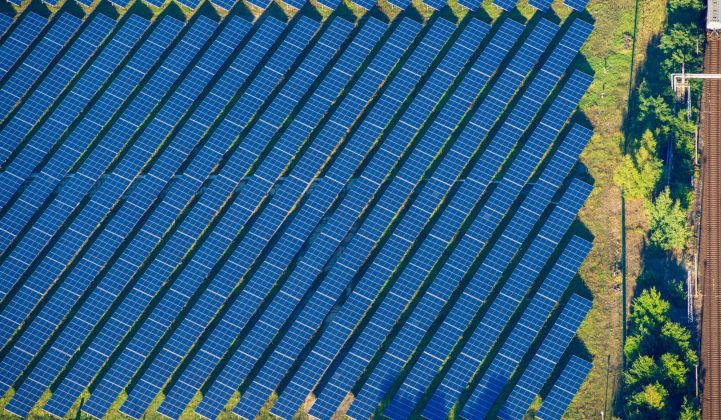Germany’s solar market witnessed its strongest growth in half a decade during 2018, adding almost 3 gigawatts of capacity, according to industry figures.
The German solar association Bundesverband Solarwirtschaft (BSW) said the 2018 figures represented a 68 percent increase over those for the previous year. The capacity additions mean there are now 46 gigawatts of solar power installed across the country.
This makes Germany the fourth-largest PV market in the world. Germany ranks behind China, which has 174 gigawatts of solar capacity, the U.S., which has 63 gigawatts, and Japan, which has 60 gigawatts, the Associated Press reported.
Tom Heggarty, senior solar analyst at Wood Mackenzie Power & Renewables, said much of the growth in 2018 was from commercial and industrial energy consumers. Along with residential PV system owners, these companies benefit from feed-in tariffs for solar energy, he said.
Germany’s Renewable Energy Sources Act, or Erneuerbare Energie Gesetz, allows for up to 52 gigawatts of distributed generation capacity. Beyond this level, which Wood Mackenzie Power & Renewables expects will be breached in 2022, the outlook for distributed solar is unclear.
“The market is likely to contract thereafter,” said Heggarty.
Germany struggles to meet 2020 commitments
These changes are of little consequence to the utility-scale solar sector, which is driven by auctions.
Around 600 megawatts of utility-scale generation has been auctioned off in Germany in each of the last two years, along with 400 megawatts of joint onshore wind and solar capacity that has mostly gone to PV.
But these volumes will be dwarfed by upcoming auctions as Germany struggles to meet its 2020 commitments for renewable energy generation, Heggarty said.
Ironically for the country that invented Energiewende, Germany looks likely to miss a European Union-mandated target of 18 percent renewable energy supply by 2020, said Heggarty.
As part of its course-correction plans, the administration has mandated a series of extraordinary auctions for a total of 4 gigawatts of solar and onshore wind over the next two years. “This will provide a boost to the German solar PV market,” Heggarty commented.
The country also plans to switch off its nuclear plants by 2022 and is considering a proposal to stop burning coal for electricity by 2038. In theory, these measures could provide a significant boost to the German solar market too.
Upward momentum
Wood Mackenzie Power & Renewables expects between 3.3 gigawatts and 4.1 gigawatts of solar to be installed per year in 2021 and 2022, compared to an annual average of around 1.6 gigawatts between 2014 and 2018.
The upward momentum in Germany’s solar market is being helped by significant reductions in the cost of technology. Global PV module prices fell by around 30 percent between 2017 and 2018, said Heggarty.
On top of this, the last year saw the removal of minimum import price duties on Chinese modules imported into the European Union. This means the economics of PV in Europe now “look very attractive,” said Heggarty.
In high-irradiation markets such as Spain and Italy, the plummeting cost of solar has already led to the emergence of subsidy-free projects. Wood Mackenzie Power & Renewables predicts other European markets will follow suit in 2019.
Germany hasn’t jumped on the bandwagon yet, predominantly because developers already have a healthy pipeline of auction projects to bid for. But there are signs subsidy-free solar won’t be long in coming to the market.
Energie Baden-Württemberg (EnBW), one of Germany’s four largest utilities, has already announced a 175-megawatt subsidy-free project, said Heggarty. “Projects bid into the auctions must be between 750 kilowatts and 10 megawatts in size,” he noted.
“You will be able to achieve economies of scale and potentially deliver at a lower cost outside of the auction program by developing much larger projects than this, which is what EnBW is looking to achieve here," he said.
Compensating for nuclear and coal
BSW, the trade body, believes Germany needs to develop another 7.5 gigawatts of solar if the country is to compensate for the phasing out of nuclear by 2022 and coal by 2038.
“To reach the climate goals and to close the electricity gap of the phase-out of coal and nuclear power in Germany, we need to triple the PV market,” said BSW spokesperson Christian Hallerberg.
“That is feasible because solar parks already generate power today for around 5 cents [6 U.S. cents] per kilowatt-hour in Germany, and costs are further declining,” he said.




